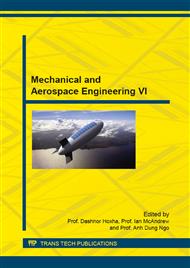p.205
p.213
p.219
p.224
p.229
p.234
p.239
p.249
p.256
Macroscopic Analysis of Spray Development Using Direct Injection for Studying Ethanol Fuel Behavior
Abstract:
A great difficulty in spray analysis is the intrinsic subjectivity in the manual measurements of macroscopic spray characteristics. Within its contexts this work has the main objective to demonstrate a systematic methodology for the spray analysis adopted for acquiring the data results based on numerical criterion dealing with the numerical matrices that represent the spray images. The results shown in this work refers to EXXSOL D60 injection, a tested fluid used to simulate ethanol spray characteristics. The characteristics analyzed were spray penetration, spray pattern at various moments after start of injection and the total volume of the cone spray also as a function of time. The methodology applied uses the numerical matrices of images in different stages of injections. A computational routine written in Matlab environment deals with the numerical matrices of the spray images to localize the spray boundaries based on a numerical criterion. All the subsequent analysis is then performed with the boundaries location data in hand. The results show higher growth of penetration in the beginning of injections, higher displacements of the bottom part of the spray also in the beginning of injections and a linear growth of spray volume injected. The importance of all the results acquired in this work demonstrated that the proposed methodology is suitable for spray analysis.
Info:
Periodical:
Pages:
229-233
Citation:
Online since:
October 2015
Keywords:
Price:
Сopyright:
© 2015 Trans Tech Publications Ltd. All Rights Reserved
Share:
Citation:


